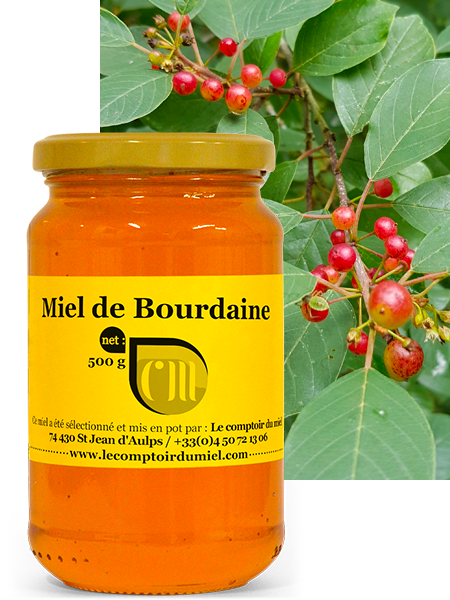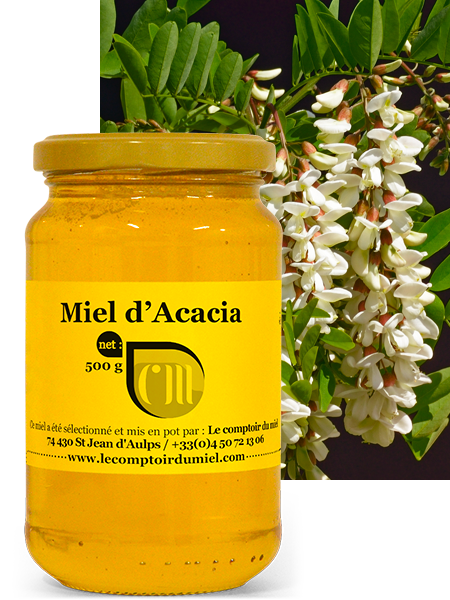Made from our French terroir honeys, this raw honey is harvested in the hilly region of the Monts de Blond in the Limousin region.
Bourdaine is a shrub growing from one to five meters high. It is a melliferous plant (good for honey) found in the hedgerows of the Limousin region, where it thrives naturally. It is also found in large quantities in the Landes region. But the taste is totally different!
It has a distinctive scent that attracts bees. During its flowering period, from April to July, bees actively gather nectar from its small greenish flowers, which they then transform into sweet, fragrant honey.
The fruit, which turns from green to red and then black, should not be eaten. They are considered toxic. The bark, on the other hand, is renowned for its beneficial properties for intestinal transit. It is a powerful laxative, used mainly in herbal teas.
The taste, smell and preservation of borage honey:
The scent of borage honey is mild and faint. The flavor is sweet and smooth. Its taste is reminiscent of barley sugar. It’s definitely an original taste, without being too strong. Lovers of acacia or rhododendron will appreciate borage honey. Its color is orange-brown. Thanks to its high fructose content, crystallization is slow. In some years, borage honey remains liquid for several months.
Bourdaine honey harvested in the Landes does not have the same flavor! It is very often parasitized by the ash heather, which is very common in the Landes region, and which therefore takes the upper hand. It doesn’t have the same color, and crystallizes much more quickly.
The benefits of borage honey :
Some people claim that borage honey has the same effects as bark! But I doubt it!
On the other hand, it can be recommended for digestive and intestinal problems, without having the strength of bark decoctions.
Like most honeys, it can be used on wounds to help them healing. It is also effective on the skin to soften it.
Did you know?
Depending on the techniques used and the part of the plant being worked, it can be used to dye a variety of materials, such as textiles. From green to red, a wide range of colors can be obtained, depending on whether fresh or dried bark or berries are used. Bourdaine wood is very flexible and has traditionally been used for basketry.


